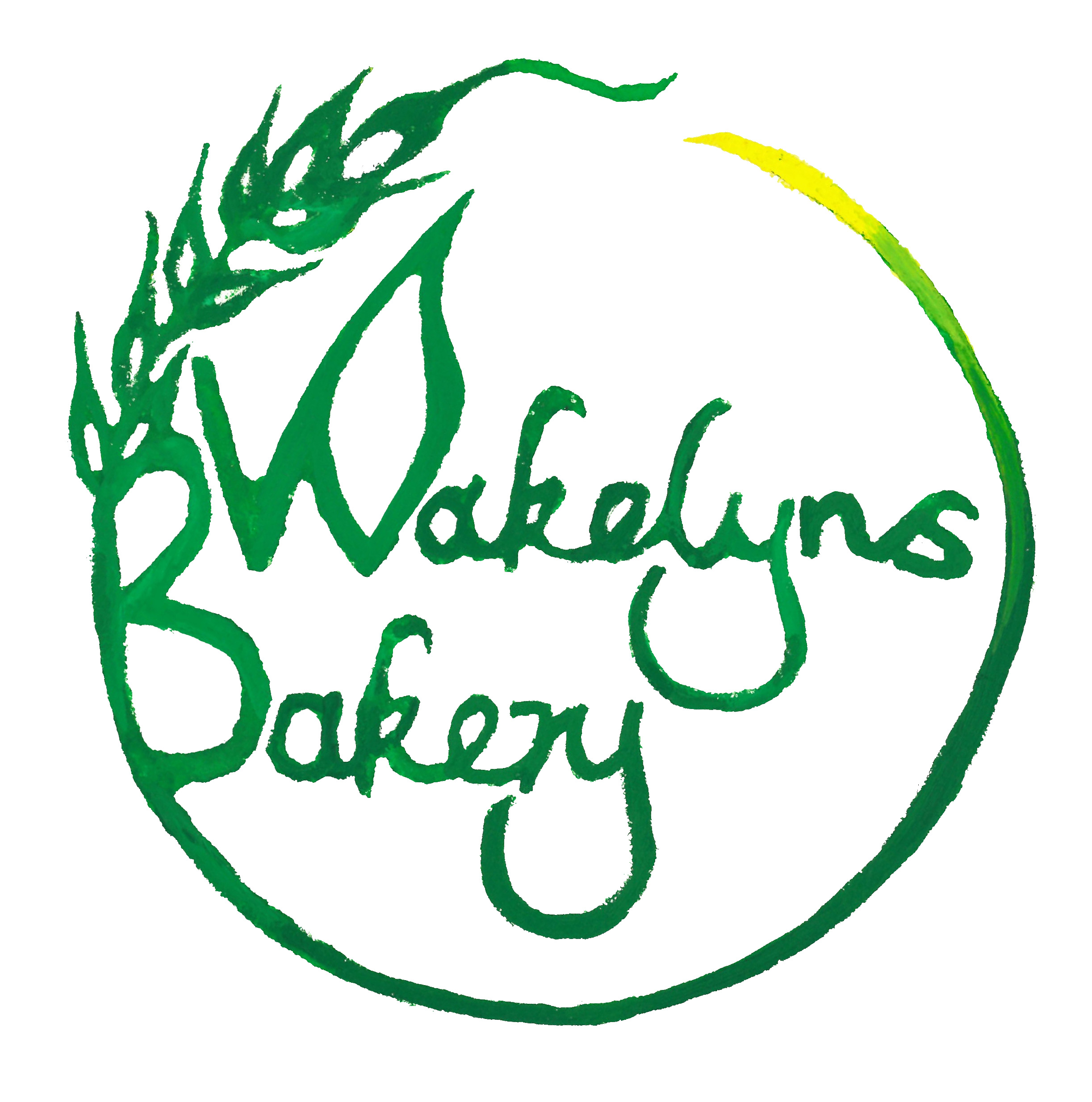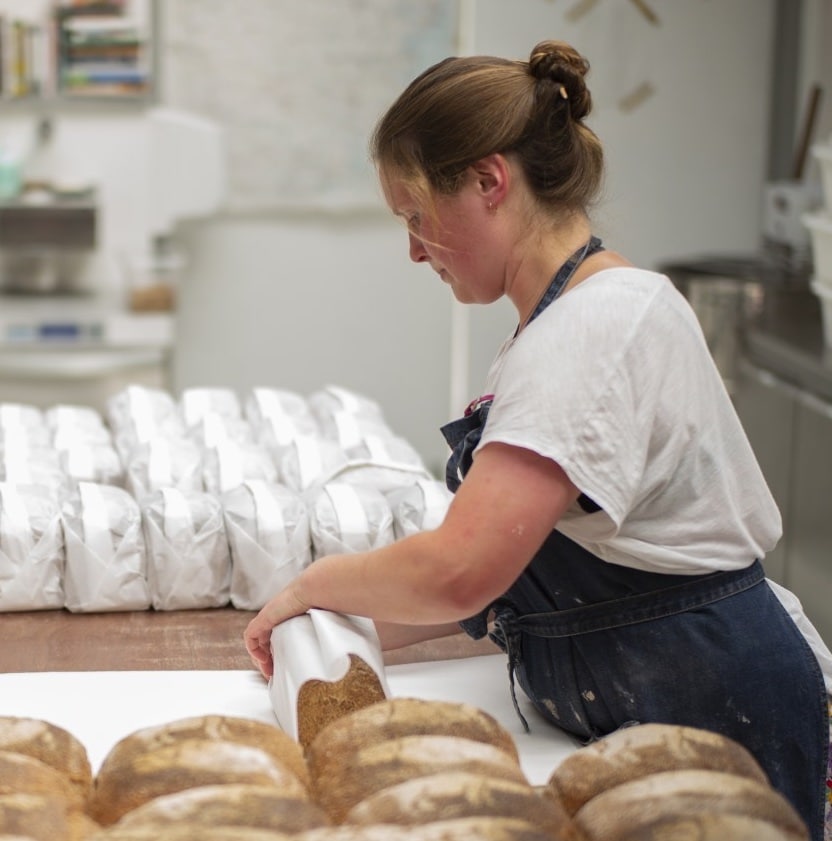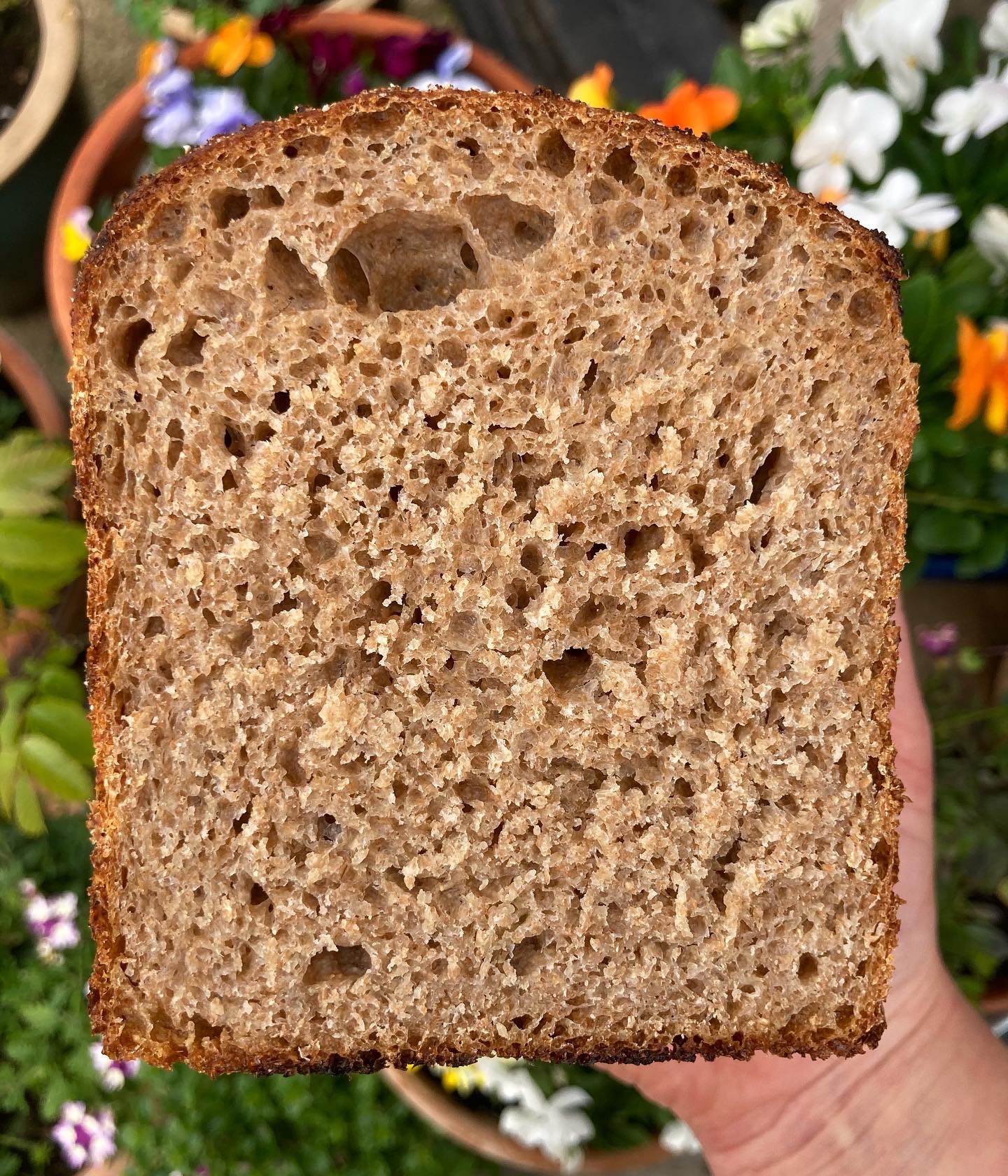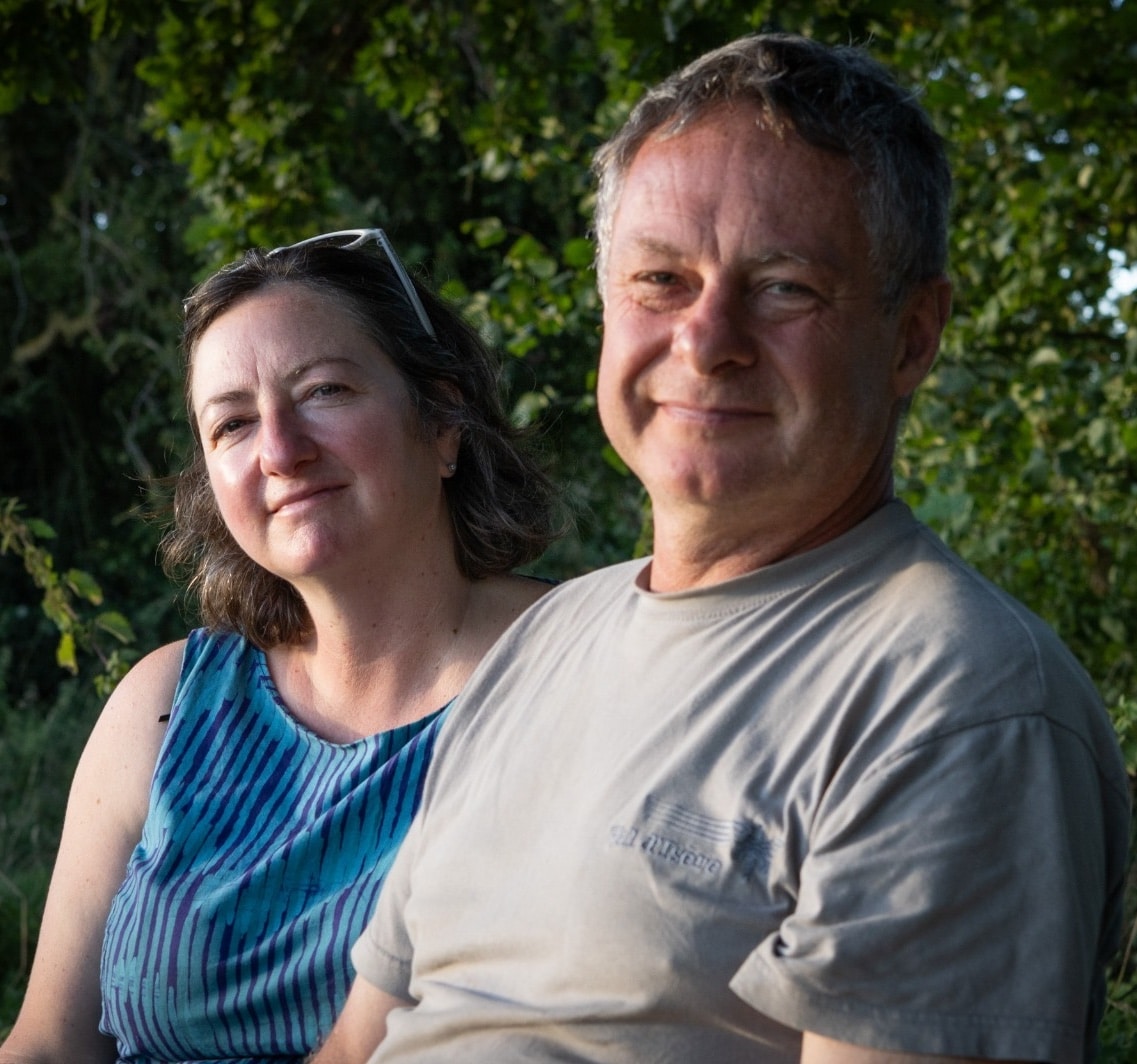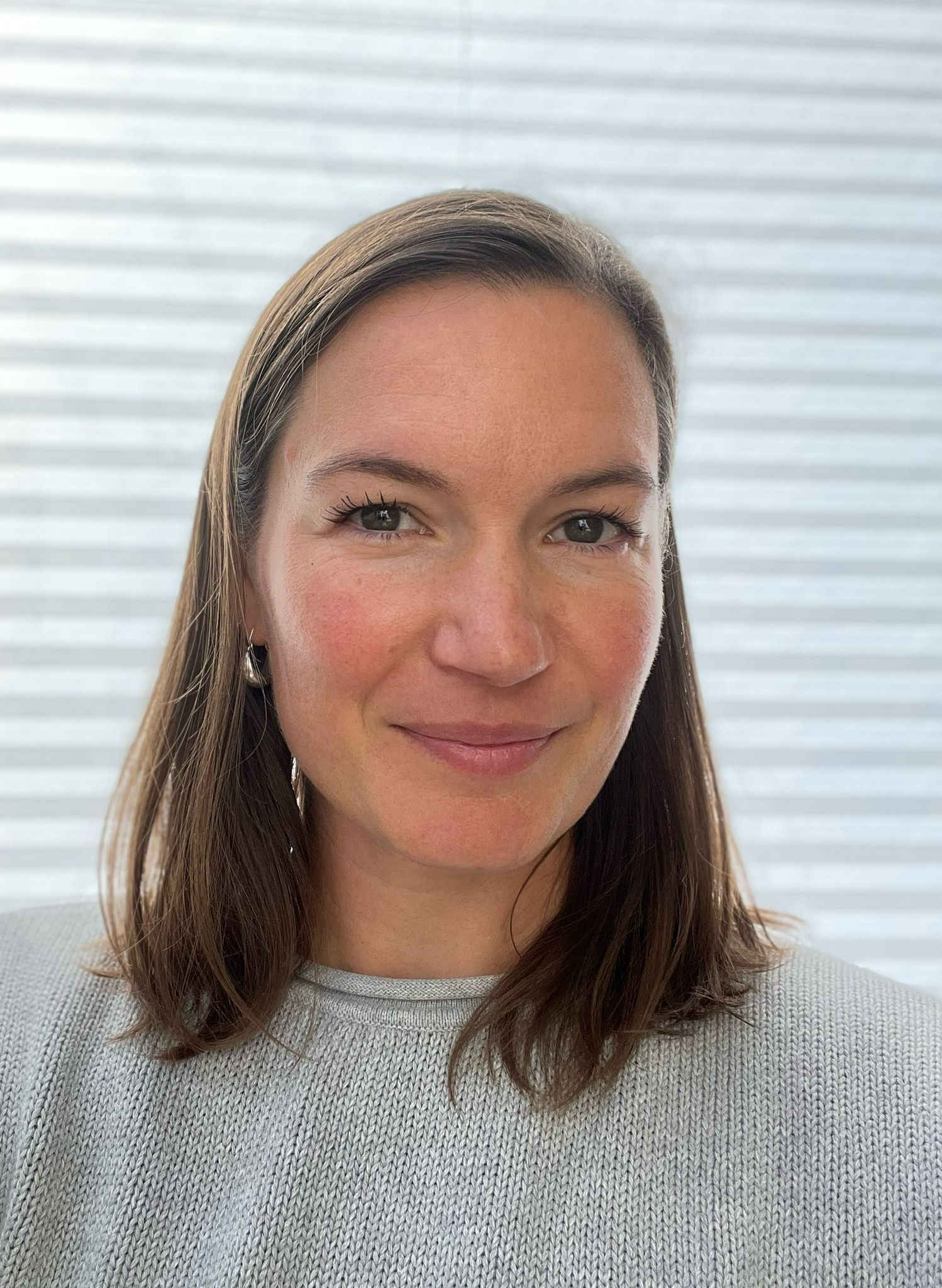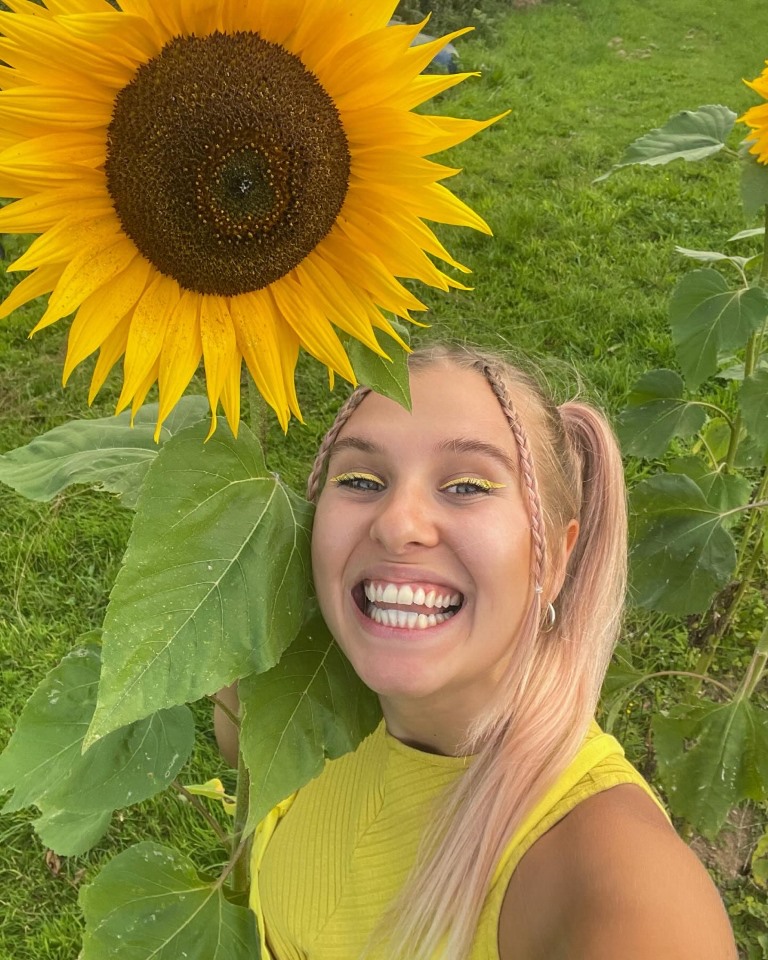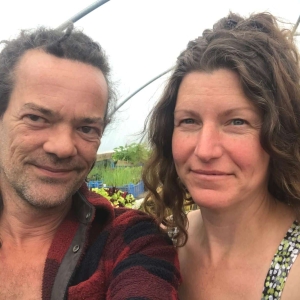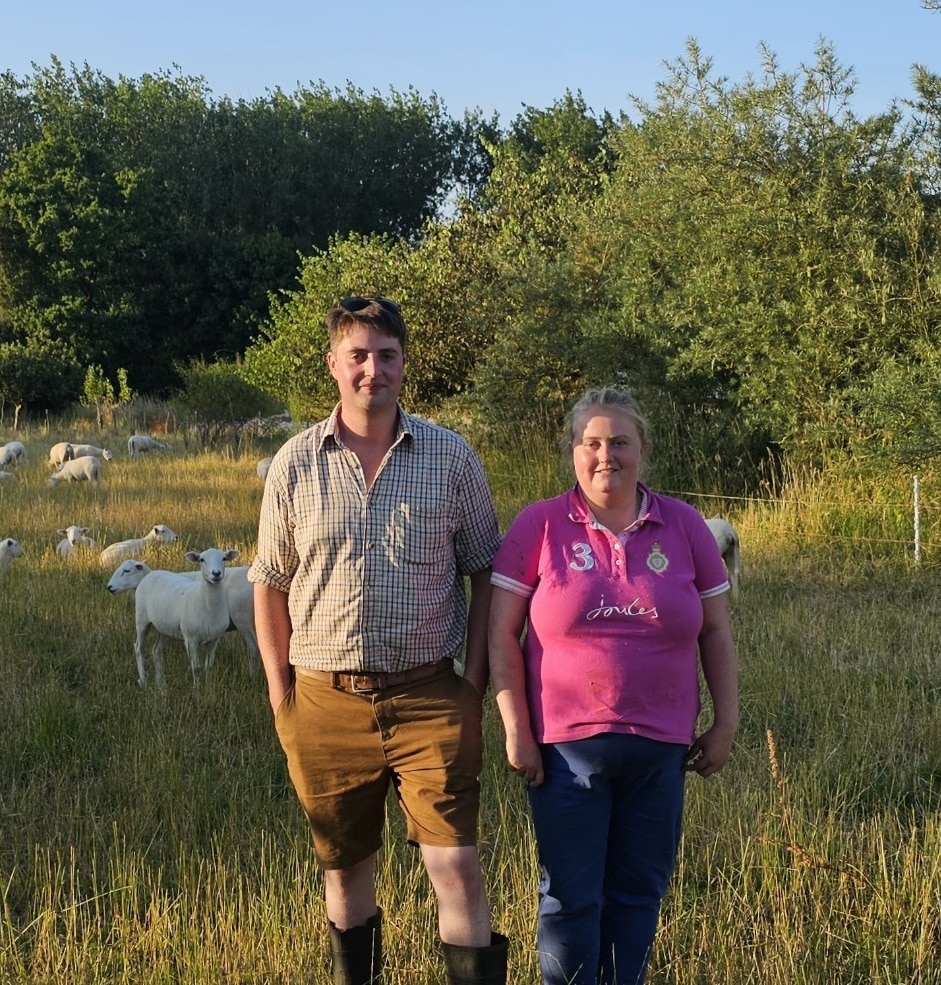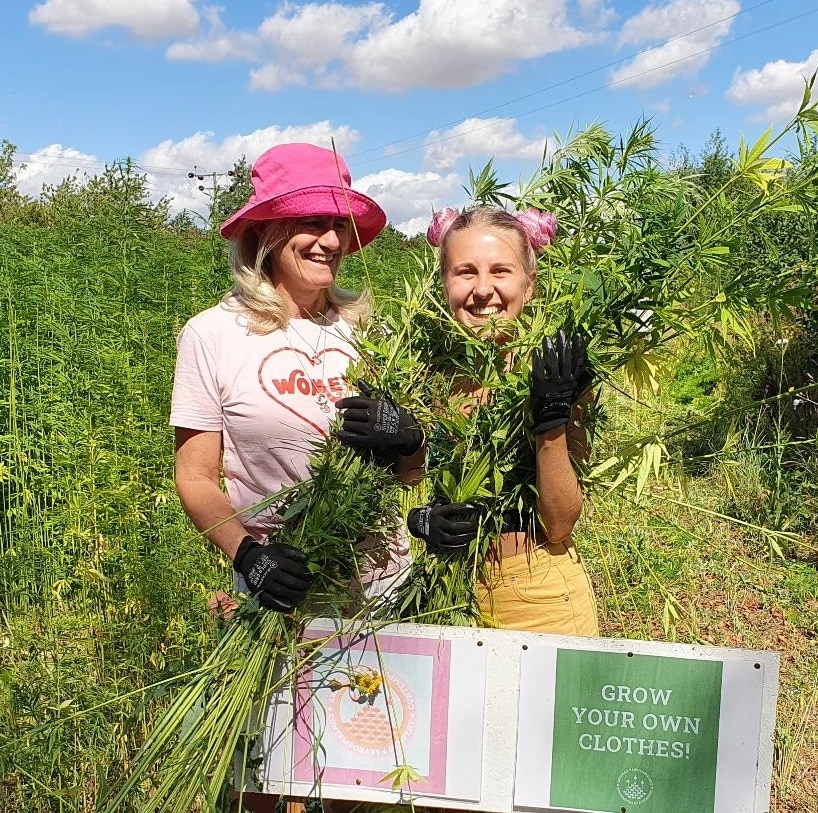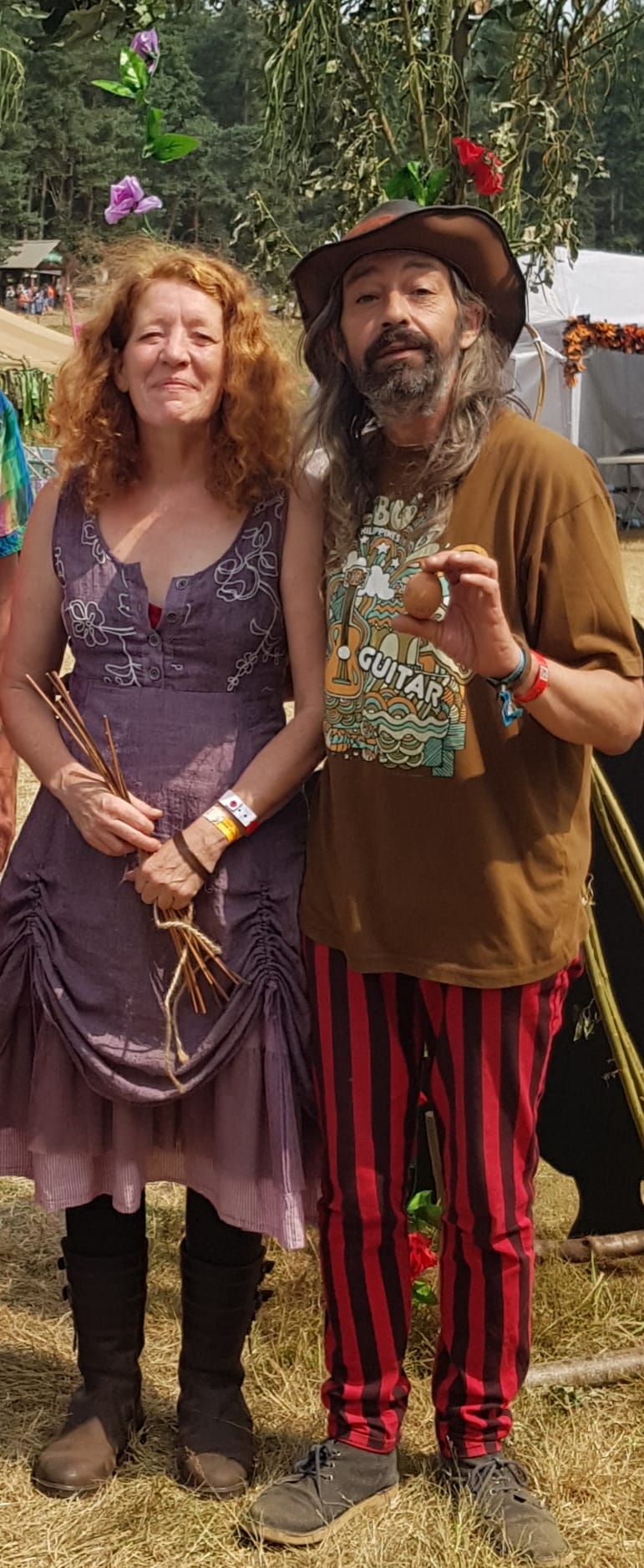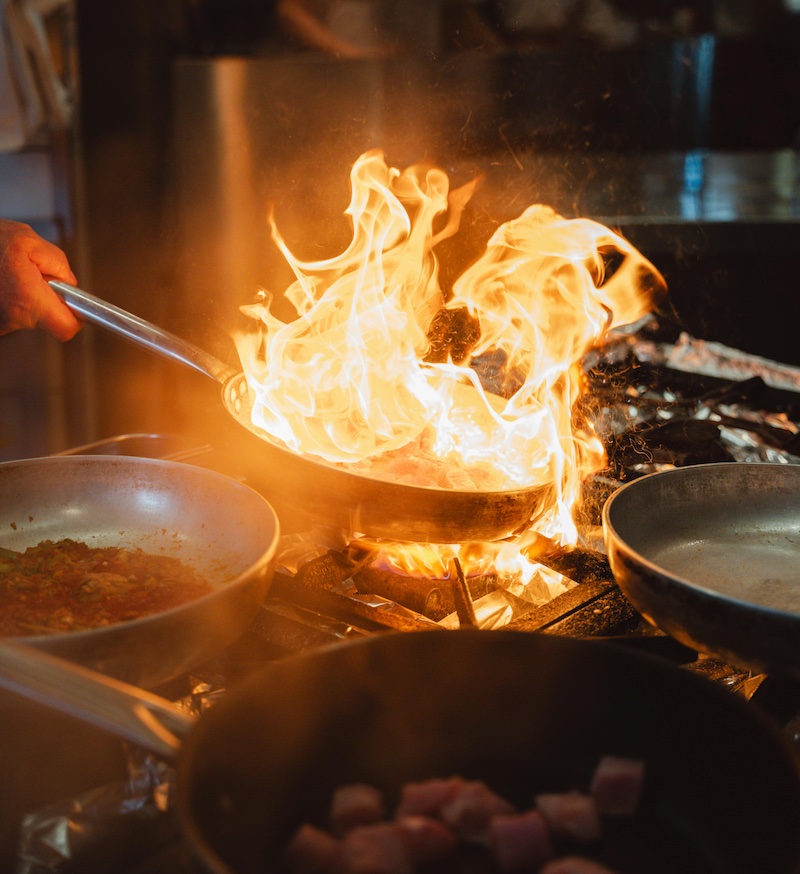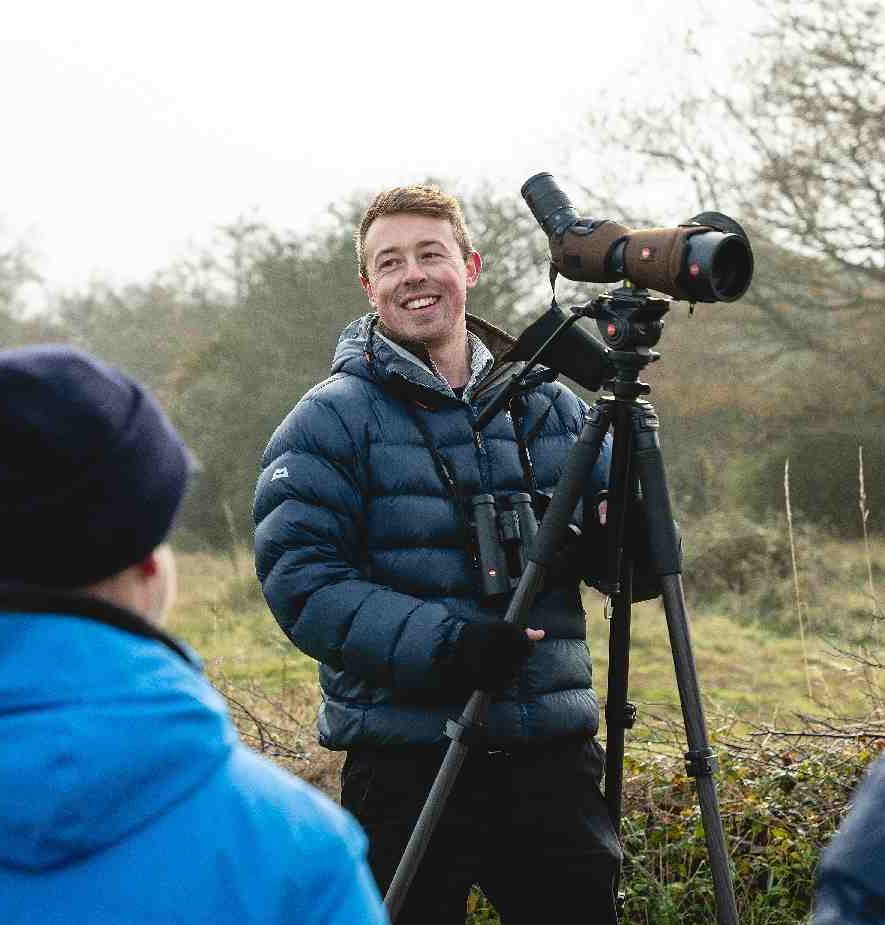In 2021 and 2022, we planted an educational Wakelyns Story of Wheat plot with Edward Dickin from Harper Adams University, Nick Fradgley from NIAB and Heron Holmes from Waterland Organics. In 2023, we are taking a break from this plot, as we also pause our Wheat, Walk, Talk ‘n’ Bake course. We look forward to doing them again in the future. In the meantime, you can read about the past plots below.
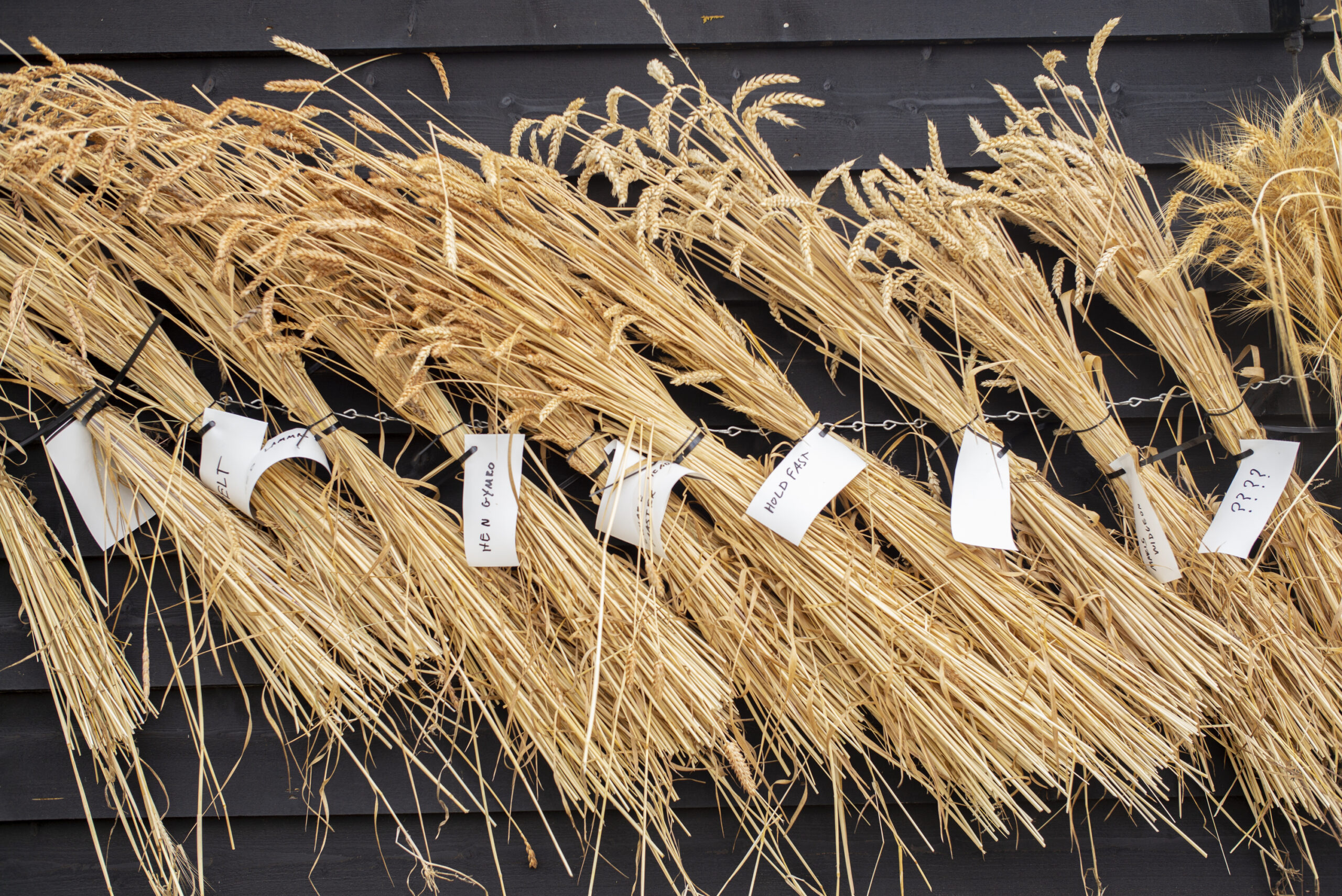
Tracing the development of the first types of wheat in the Fertile Crescent to modern wheats, this twelve wheat plot forms part of the baking classes on the farm and farm visits.
The farming and growing of monoculture modern hybrid wheat, specifically bred to respond to synthetic nitrogen-based fertilisers so it could grow anywhere, has had disastrous impacts on people and landscape. Experimentation in hybridisation was occuring in the 19th century, though it really accelerated during the so-called ‘Green Revolution’ of the 1960s. This marked a period of rapid and large-scale growth and global change in agriculture, with the aim to relieve global hunger through intensive selection and intensive farming, resulting in monoculture modern hybrid wheat. The idea was that if farms moved away from growing a variety of crops and in their place, became very good at growing a single crop, this would improve efficiency and yield. But a field of modern, uniform wheat, comprising of identical plants with identical weaknesses and needs is incompatible with sustainable farming.
So what seeds should we be sowing for a more sustainable food and farming future? We hope that this plot, surrounded by other grains and Martin Wolfe and the Organic Research Centre’s YQ and Q population wheats, bred at Wakelyns, will open up those conversations on grain growing, breeding, farming and seed and food sovereignty.
Einkorn (Triticum monococcum) and Emmer (Triticum turgidum) were the first types of wheat domesticated 10,000 years ago in western Asia in an area sometimes called the Fertile Crescent. Emmer is the ancestor of durum and rivet wheat, and when the first farmers brought Emmer further east to the regions around the Caspian Sea, Emmer hybridised with a goatgrass to give us bread wheat (Triticum aestivum). Both Einkorn and Emmer are hulled wheats and need dehulling to make the grain edible for humans. Einkorn was always a minor crop compared to Emmer but was useful in mountainous regions.
A hybridisation between free threshing bread wheat and hulled Emmer produced Spelt, which is better able to tolerate cold thin soils in the regions around the Alps. Spelt is fully fertile when crossed with bread wheat, and many modern spelt varieties include bread wheat genetics.
Red Lammas is a landrace wheat grown in South East England up until the late 19th Century. A landrace is a diverse population where the alleles (genetic traits) that are best adapted to local conditions become more frequent in the population by natural selection. Red Lammas was recognised as one of the best landraces for baking quality, being called the King of Wheats and in demand by London bakers. Red Lammas has thin bran that makes fine flakes when stone milled. The last landraces still grown in Britain were the Hen Gymro landraces in Wales, due to their ability to tolerate more marginal conditions, lasting into the 1930s.
After the 1860s millers adopted roller mills which comprise a set of breaker rolls that strip away the bran from the endosperm, which is further reduced to produce white flour. Hard wheats with thick bran such as those imported from Canada are especially suited to roller milling as the coarse bran easily separates from the endosperm, and these largely replaced British grown wheat. In response, British farmers abandoned the high-quality landraces, such as Red Lammas, in favour of the higher yielding square head wheats. This type of wheat is characterised by a high yield of straw, and soft red grain of poor baking quality. Squareheads Master, Red Standard, Browick and Prince Albert were all types of square head. These varieties were pure lines from the best ears selected from landraces, losing the genetic diversity in return for higher yields. Squareheads Master was grown from 1866 until the late 1950s.
Around 1900, scientists rediscovered the work of Gregor Mendel, and the science of genetics arose by combing Mendel’s laws of inheritance with Darwin’s theory of natural selection. Roland Biffen applied the new science of genetics to wheat breeding and became the first director of the Plant Breeding Institute (PBI) in Cambridge. Released in 1916, Yeoman (Browick x Red Fife) was a cross between a British square head and a Canadian hard red wheat. Yeoman was grown until the 1950s, and was a parent of Holdfast (1936) and grandparent of Maris Widgeon (1964). The gluten subunit 1A that gives very good baking quality from Yeoman is still found in modern wheats, such as Crusoe, which can trace its lineage directly to Yeoman.
During the 1950s, the French variety Cappelle-Desprez largely replaced the pre-war stalwarts Squareheads Master, Yeoman and Holdfast. Included in the pedigree of Cappelle-Desprez are British square head varieties used by the Vilmorin company in the early 20th Century. Cappelle introduced resistance to eyespot, allowing wheat to be grown after wheat, an important advantage as fertility building long rotations were abandoned as synthetic nitrogen fertiliser became widely used. Cappelle dominated the UK wheat area (70%) during the 1960s, and was widely used as a parent in the 60s and 70s in varieties such as Joss Cambier and Maris Huntsman.
Maris Widgeon, 1964, was one of the tall ‘Maris’ varieties bred by the PBI on Maris Lane. It was very popular at the time due to its high quality and has remained so with organic farmers.
Hobbit, 1976, was the first British semi-dwarf wheat, bred at PBI by backcrossing South American wheat (derived from Norman Borlaug’s Green Revolution wheat) with Cappelle Desprez to adapt it to the UK, then further crosses with British varieties. Hobbit was quite short-lived in commercial cultivation due to susceptibility to yellow rust but, along with Bilbo and Durin, was used to breed the high yielding varieties such as Norman, Galahad, Brock, Longbow, Hereward etc. that dominated the 1980s and 90s. PBI was privatised in the late 1980s by the Thatcher government. Modern varieties follow the 1980s pattern of semi-dwarf, high yielding varieties, but with improved disease resistance. Ancient wheats and wild relatives are still used in wheat breeding, for example, Robigus a variety with genes introduced from a cross with emmer, features in the pedigree of half of the varieties released since 2000.
Hereward, 1989, was valued as having reliable high quality for many years. Strangely, it has very good dough rheology qualities, but has a poor profile of high molecular weight glutenin genes on paper. Nobody has ever managed to work out where it gets its quality from or bred any varieties from it.
Skyfall, 2014, was valued as a high quality wheat variety with a step change in yield. It is one of the few awned varieties in the UK and has recently become susceptible to yellow rust.
KWS Extase, 2019, bred by KWS, this variety is a new high quality milling wheat from French ancestry so is relatively early and taller that modern UK wheats. It is apparently very disease resistant and has high early vigour so may be valuable for organic farming.
